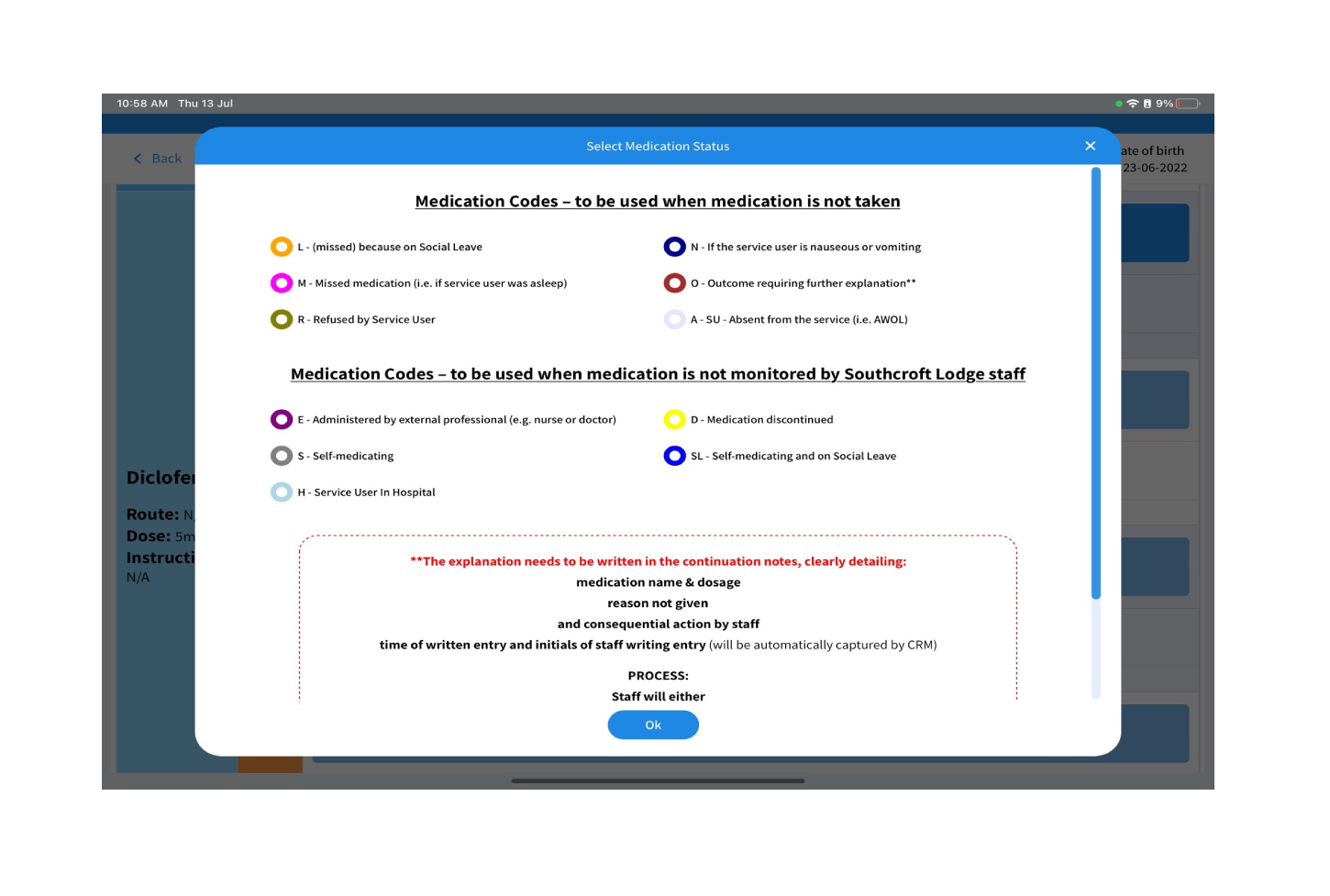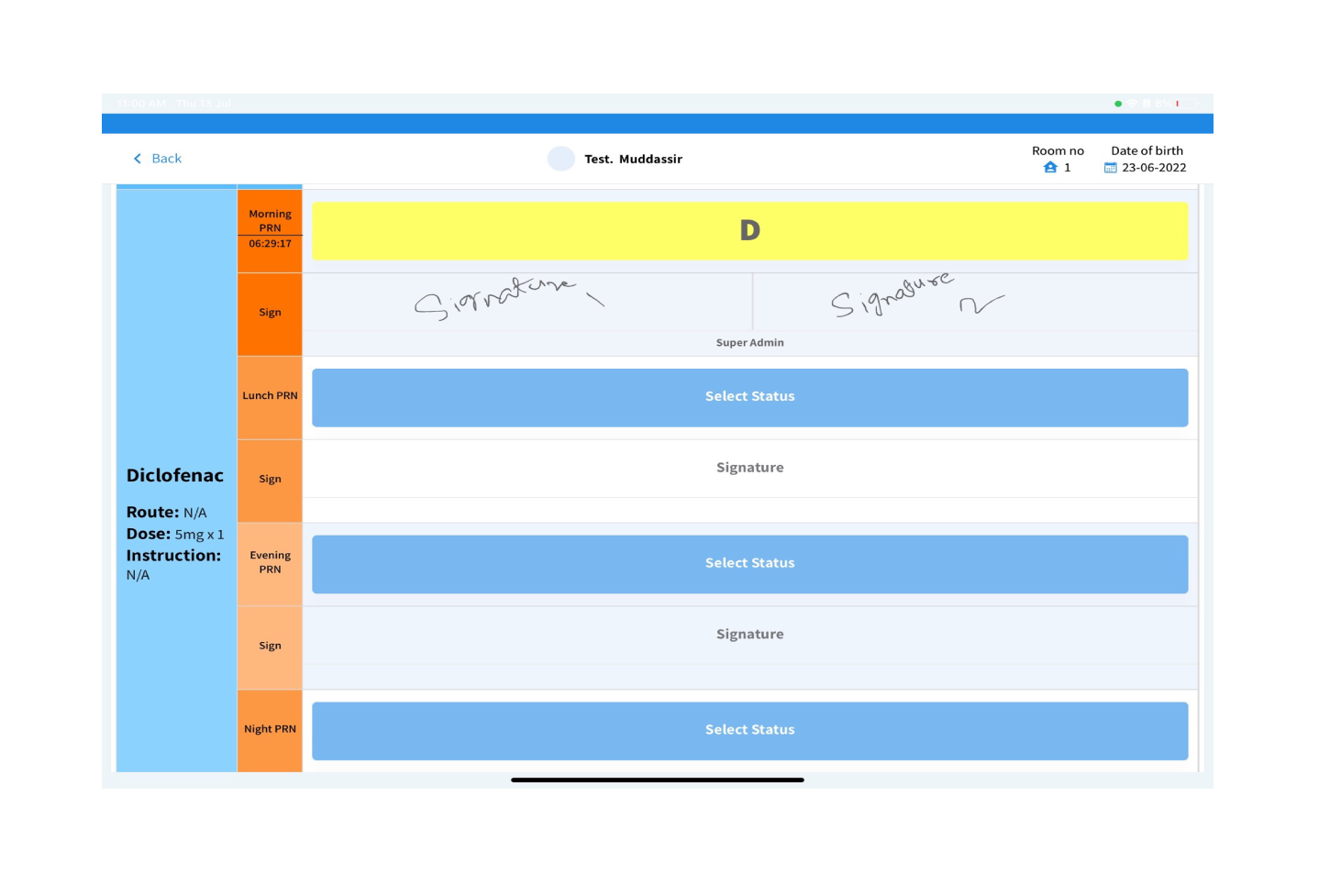MAR Chart Tablet App
Implementation for Patient Care in a Hospital





MAR Chart Tablet App
1. Introduction:
This case study examines the implementation and impact of
Medication Administration Record (MAR) charts in a hospital
setting. MAR charts are used to track and document medication
administration to patients, ensuring accuracy, accountability,
and safety in the medication management process.
2. Objectives:
- Enhance medication safety: Develop a standardized system to
accurately record and track medication administration to
patients, minimizing errors and adverse drug events.
- Improve communication and collaboration: Facilitate
effective communication among healthcare professionals
involved in patient care, ensuring seamless coordination in
medication administration.
- Streamline documentation processes: Implement an efficient
and comprehensive documentation system that captures
medication details, administration times, dosage, and any
relevant patient information.
- Support medication reconciliation: Enable healthcare
providers to reconcile medications during transitions of care,
reducing the risk of medication discrepancies and adverse
effects.
- Promote patient-centered care: Empower patients to actively
participate in their medication management by providing them
with accessible information and involving them in medication
administration decisions.
3. Key Features:
a. Comprehensive Medication Records: MAR charts provide a
comprehensive overview of the patient's medication regimen,
including details of prescribed medications, dosages,
frequencies, and administration routes.
b. Real-time Documentation: Healthcare professionals record
medication administration directly on the MAR chart, ensuring
accurate and up-to-date information is readily available.
c. Barcode Scanning: Utilize barcode scanning technology to
verify the medication, ensuring the right medication is
administered to the right patient at the right time.
d. Allergy and Interaction Alerts: MAR charts can include
information on patient allergies and potential drug
interactions, prompting healthcare providers to take necessary
precautions.
e. Documentation of PRN Medications: PRN (as needed)
medications are documented, including the reason for
administration and any restrictions or limitations.
f. Signature and Timestamp: Each medication administration is
recorded with the healthcare professional's signature and
timestamp, promoting accountability and auditability.
g. Medication Reconciliation: MAR charts support the
reconciliation of medication changes during transitions of
care, ensuring continuity and accuracy of medication
administration.
h. Patient Education and Engagement: MAR charts can include
patient-friendly information about medications, empowering
patients to understand their treatment and actively
participate in their care.
4. Benefits and Impact:
a. Medication Safety: MAR charts reduce medication errors,
ensure accurate medication administration, and provide a
robust system for double-checking medication details.
b. Communication and Collaboration: MAR charts promote
effective communication among healthcare professionals,
ensuring seamless coordination in medication administration
and reducing misunderstandings.
c. Streamlined Documentation: The use of MAR charts simplifies
and standardizes medication documentation, reducing paperwork
and streamlining documentation processes.
d. Medication Reconciliation: MAR charts aid in the accurate
reconciliation of medications during care transitions,
reducing the risk of medication discrepancies and adverse
effects.
e. Patient Involvement: MAR charts engage patients in their
medication management, promoting active participation,
understanding, and shared decision-making.
f. Improved Efficiency: MAR charts streamline medication
administration processes, enabling healthcare professionals to
spend more time providing direct patient care.
g. Auditability and Compliance: MAR charts provide a traceable
record of medication administration, supporting auditing and
ensuring compliance with regulatory standards.
5. Conclusion:
The implementation of MAR charts in hospital settings
significantly improves medication safety, documentation
processes, and communication among healthcare professionals.
By enhancing accuracy, streamlining documentation, supporting
medication reconciliation, and promoting patient involvement,
MAR charts have a profound impact on patient care and safety.
The comprehensive nature of MAR charts fosters collaboration,
accountability, and efficiency in medication administration,
ultimately enhancing the overall quality of patient care in
hospitals.
"Let's Connect and bring your ideas to life. Whether you have a question, need a consultation, or want to discuss your project, we are here for you. Reach out to us through our contact form, give us a call, or connect with us on social media. We look forward to hearing from you and exploring how we can work together to achieve your goals."